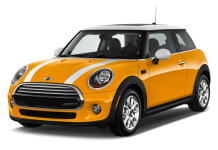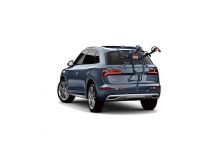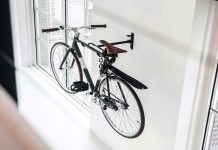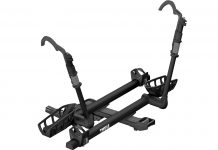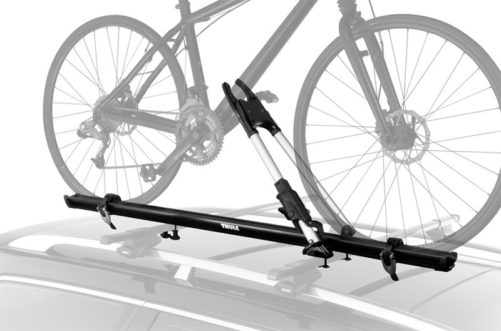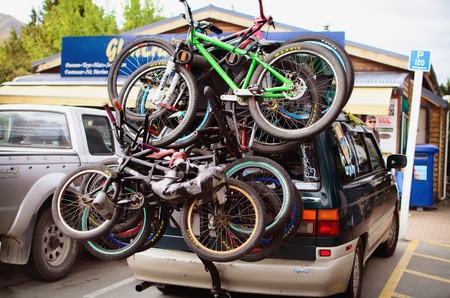Bike racks are designed to add convenience to the lives of bikers who enjoy the active lifestyle biking provides. There will be pros and cons to any bike rack but many problems can be avoided with proper foresight and planning.
The 5 most common bike rack complaints and how to avoid them are listed below.
-
The rack is a poor fit for the vehicle or bike
No biker wants to spend unnecessary time and energy struggling to load or unload their bike. And buying a rack only to find it is difficult or nearly impossible to secure to the vehicle is frustrating.
Choosing the rack that is the right fit for both the bikes and the vehicle can make this a simpler process.
- Research different kinds of racks and consider the pros and cons of each. Consider how often the rack will be used, how easy it is to install, how easy it is to store, and how long loading and unloading will take.
- Ensure the rack will mount securely to the vehicle. Professionals can help with this if the biker is uncertain.
- Make sure the bike is compatible with the rack. Often times adapters can be purchased for a better fit, especially if the bike has an alternative frame.
-
Difficulty loading bikes of varying sizes
Purchasing a rack that can load 2-5 bikes can be an advantage to families looking to take biking trips together. But sometimes loading multiple bikes of different sizes can be frustrating and is a common bike rack complaint.
Here are some tips for making this easier:
- Check to make sure all the bikes are a good fit for the rack. Sometimes smaller bikes need adapters to keep them level on hitch mounted racks.
- Loading larger bikes first and saving the smaller bikes for the end can make the process easier.
- Often it just takes some maneuvering to find a rhythm and figure out to best load the bikes. Over time it will become easier and the process will become quicker.
-
A damaged bike or vehicle
Few things are more frustrating than reaching the desired destination and discovering damage to the bike or car. Not only does this potentially ruin plans but the damage will likely cost money to fix.
This problem can be avoided by following certain steps.
- Be sure the rack is properly installed and the bikes are correctly loaded.
- Be sure all straps are fastened securely.
- Check to make sure the bikes are high enough off the road.
- Always make sure the bikes are stable and not banging into each other.
- Always be aware of any added height or length to the vehicle while driving. With roof mounted racks, driving under parking garages or even low-hanging tree branches can be detrimental to both the bikes and vehicle. And with trunk or hitch mounted racks, drivers should always be cautious when backing up or parking in tight, enclosed spaces.
-
A stolen bike
It is disheartening to bikers to discover the bike they have invested time, money, and memories into was stolen. While accidents do happen this common bike rack complaint can be avoided.
- Be sure the rack has the necessary equipment to not only secure the bikes but to also lock the rack itself to the vehicle when not in use. Locking pins will secure the rack so it cannot be removed.
- Consider purchasing additional cable locks to thread through the wheels for extra security and peace of mind.
- Avoid loading up the night before a trip so that the bikes are not left unattended on the vehicle.
- Since no system is 100% secure, be sure to write down the serial number for the bike and register it in an online bike registry.
-
A damaged rack
Bike racks are meant to add convenience but a rack that constantly seems to have parts breaking and needing to be fixed can be a nuisance. A faulty rack can also contribute to damaged bikes or vehicles.
This can be avoided by proper use and regular maintenance to the rack.
- Before loading the bike, be sure to check the rack closely for signs of wear to the straps, hooks, and other features. Always replace worn or damaged parts before using the rack.
- Clean the vehicle contact points before installing the rack. Wiping down the vehicle can remove grit, pollen, and other small particles. This ensures a better fit for the rack.
- Remember that the quality and safety of both the bikes and the vehicle depend in part on the biker taking good care of the rack. Keep the rack clean and store it safely.
Conclusion
Unless bikers are content to stick close to home, at some point purchasing a bike rack will likely become necessary as they open up all sorts of options for various rides and destinations.
When choosing a rack there are often just as many downsides as there are advantages. Often the choice can come down to how best to manage the downsides or minimize as many common complaints as possible.
To find the right bike rack always keep in the mind the frequency of use, the number of bikes being carried, and the overall level of convenience desired.
There is a solution to this. Buy a bike rack that caters for a wide variety of bicycle types at the outset. There are different loading systems with upright wheel trays, quality cradles plus using a universal crossbar adapter will solve many loading problems.

